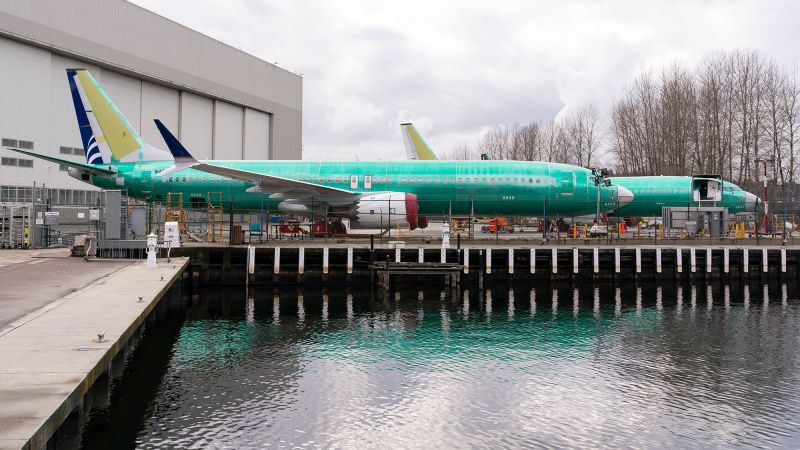The Federal Aviation Administration has found multiple problems with Boeing’s production practices following a six-week audit triggered by the January 5 door plug blowout on an Alaska Airlines’ Boeing 737 Max 9.
“The FAA identified non-compliance issues in Boeing’s manufacturing process control, parts handling and storage, and product control,” the FAA said in a press release, but did not immediately provide further details.
A separate report launched prior to the door plug incident but released last month found “gaps” in Boeing’s safety culture, including a disconnect between management and employees, and fears among employees about retaliation for reporting safety concerns.
The FAA said the findings of both this audit and the separate report should be part of Boeing’s quality improvement plan. It has given Boeing 90 days to produce the plan to fix its quality issues.
Boeing did not have an immediate comment on the FAA’s statement. But in January Boeing CEO David Calhoun conceded Boeing needed to improve its quality controls.
“Whatever final conclusions are reached, Boeing is accountable for what happened,” said Calhoun in comments to the company’s investors in January. “An event like this must not happen on an airplane that leaves our factory. We simply must do better for our customers and their passengers.”
The audit also included major Boeing supplier Spirit AeroSystems, which builds the fuselages for the Boeing 737 Max 9 jet, among other items. Without giving details, the FAA said it found multiple instances where both companies allegedly failed to comply with manufacturing quality control requirements.
Boeing used to own the operations that now make up most of Spirit, but spun it off as a separate company in 2005. Boeing disclosed on Friday that it is in negotiations to possibly re-acquire Spirit.
Asked for a comment on the report, a Spirit spokesman said only that “we are in communication with Boeing and the FAA on appropriate corrective actions.”
More than two dozen FAA inspectors are taking part in the audit of Boeing’s 737 plant in Renton, Washington, FAA Administrator Mike Whitaker told members of Congress during a hearing last month. The agency is not the only government body looking into Boeing’s quality issues.
The National Transportation Safety Board is investigating the incident aboard the Alaska Air flight. A preliminary report on the incident found that the four bolts needed to hold the door plug in place were missing when the jet left Boeing’s factory last October to be delivered to Alaska Air. The NTSB has yet to assign blame for the missing bolts.
In addition, the Justice Department is reviewing whether deficiencies found in the wake of the door plug blowout on a 737 Max flight last month violate a deferred prosecution agreement that Boeing signed with the government three years ago following two Max fatal crashes, according to a person familiar with the investigation. That probe could expose Boeing to criminal liability.
The final results of this audit will likely be the backbone of future congressional hearings that could take Boeing to task.
This Wednesday, NTSB Chair Jennifer Homendy will give the latest on the Alaska Flight 1282 investigation to the Senate committee that oversees aviation. The chair of the Senate Commerce Committee has said that hearings involving Boeing executives will take place after senators hear the latest investigative findings.
This story has been updated to reflect additional reporting and context.
Read the full article here










